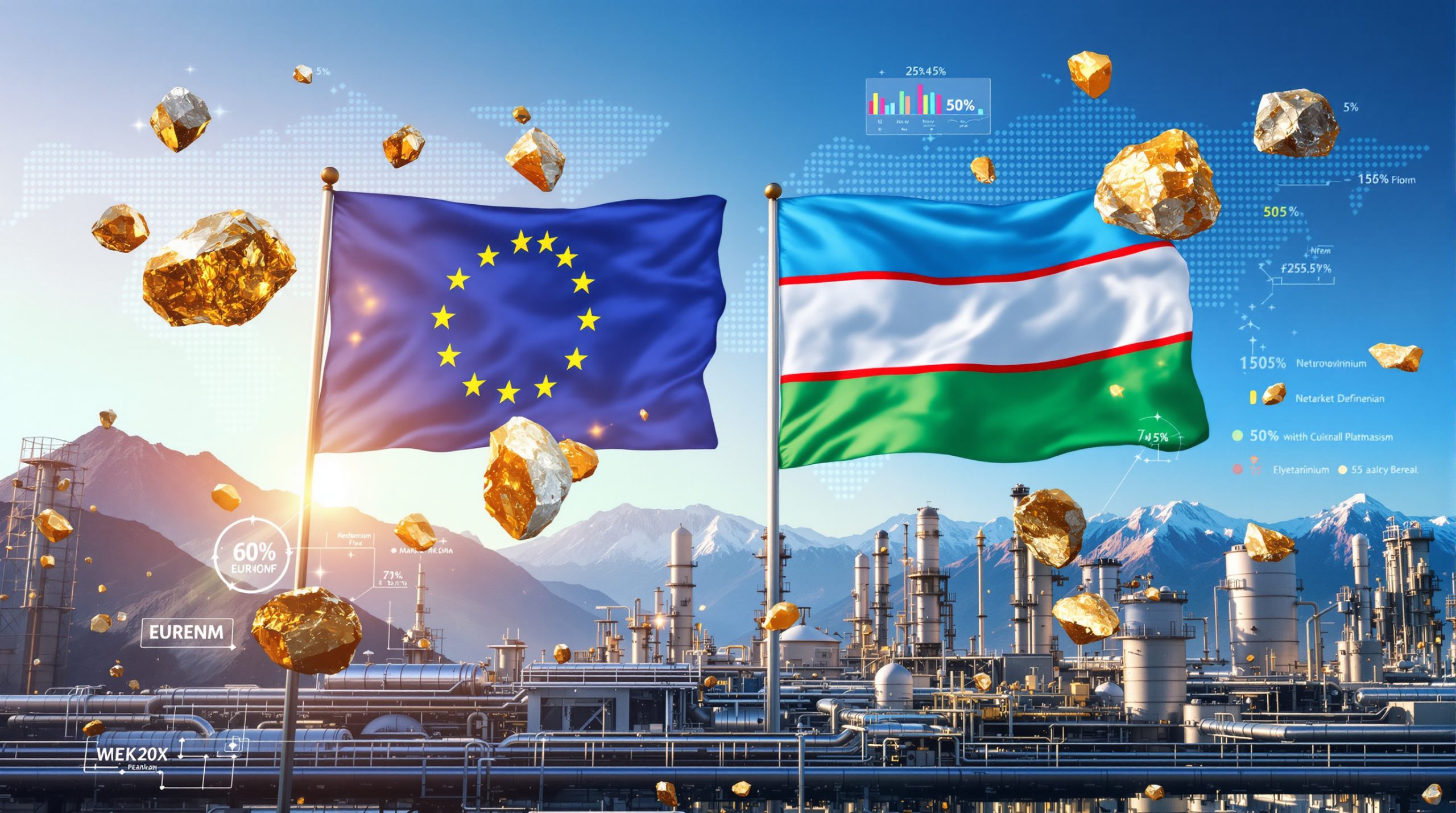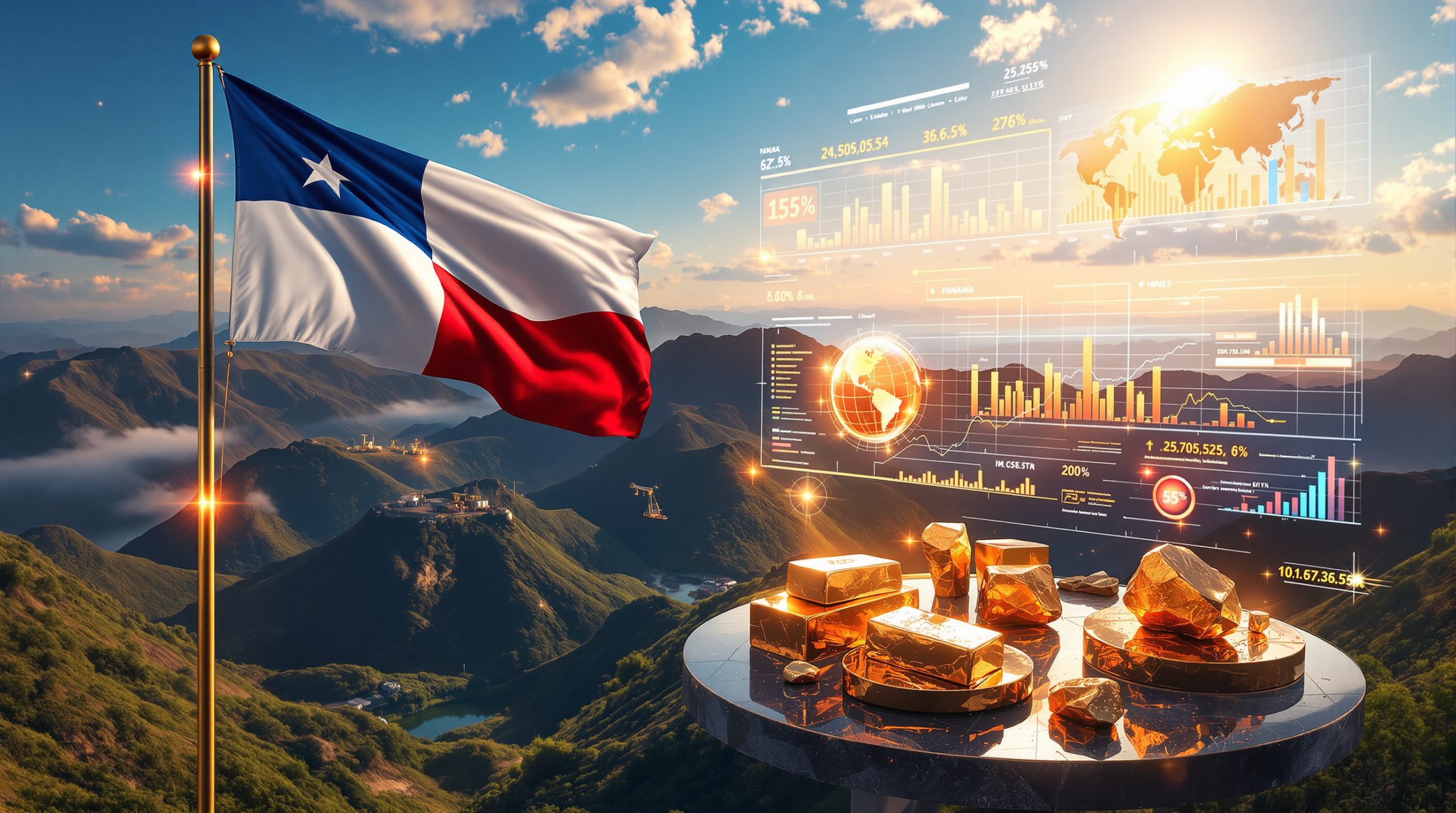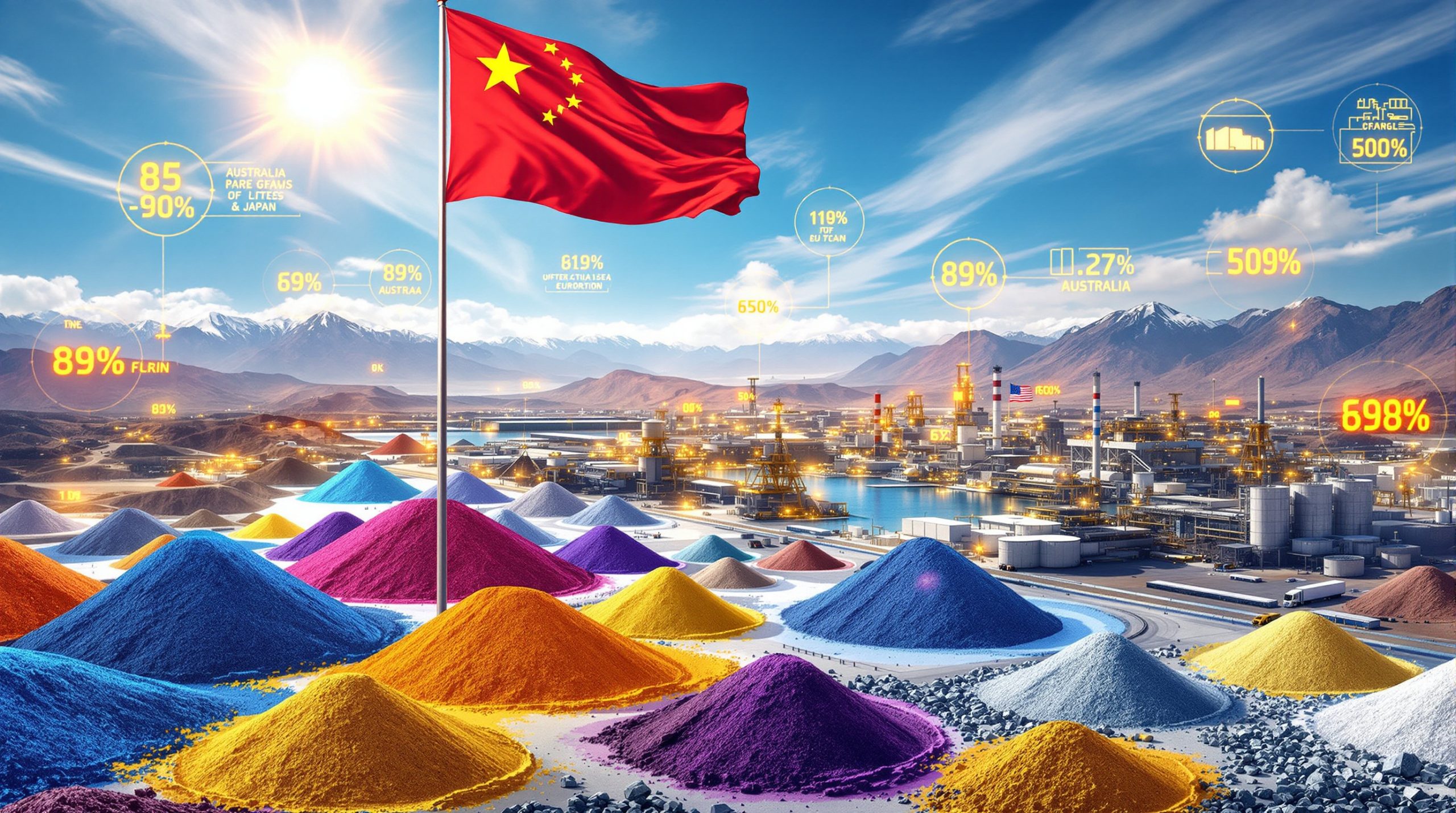Strategic Scenario Modeling for Critical Minerals Supply Chain Transformation
The critical minerals landscape stands at a pivotal juncture where traditional supply chain paradigms face unprecedented pressure from geopolitical realignments, technological innovation, and strategic resource security imperatives. As Western economies confront structural dependencies on concentrated supply sources, new partnership models emerge that prioritise long-term resilience over short-term cost optimisation.
This transformation manifests through sophisticated risk assessment frameworks that evaluate potential disruption scenarios across multiple variables: technological feasibility, political stability, resource quality, and strategic alignment. Furthermore, the emergence of these multi-dimensional evaluation criteria reflects growing recognition that critical minerals strategy requires fundamentally different strategic approaches compared to traditional commodity trading relationships.
What Does the EU-Uzbekistan Critical Minerals Agreement Mean for Global Supply Chains?
The EU-Uzbekistan rare earth partnership represents a sophisticated approach to supply chain diversification through technology-driven collaboration rather than traditional mining investments. This strategic alliance demonstrates how advanced hydrometallurgical expertise can unlock value from previously underutilised resource streams while establishing new geopolitical frameworks for critical materials cooperation.
Moreover, the critical minerals energy transition increasingly depends on such innovative partnerships to secure essential materials for renewable energy technologies and electric vehicle manufacturing.
Partnership Structure and Technical Scope
KU Leuven's SOLVOMET Research and Innovation Centre brings specialised hydrometallurgical capabilities to Uzbekistan's Technological Metals Complex, focusing specifically on rare earth elements and rhenium extraction from uranium-depleted pregnant leach solutions. This technical approach represents a paradigm shift from conventional mining operations toward advanced recovery optimisation from existing industrial processes.
The partnership leverages SOLVOMET's expertise in selective leaching and advanced metal recovery methodologies, enabling the extraction of valuable critical minerals from process streams that would otherwise represent waste products. This technological integration creates new pathways for resource recovery without requiring substantial new mining infrastructure or environmental disruption.
Key technical components include:
- Advanced hydrometallurgical processing for complex mineral separation
- Selective extraction protocols for rare earth elements from mixed solutions
- Rhenium recovery optimisation from uranium processing byproducts
- Quality control systems aligned with European technical standards
- Environmental compliance frameworks meeting Western governance benchmarks
Timeline and Implementation Roadmap
The collaboration officially commences in January 2026, following the agreement announcement during EU Critical Raw Materials Week 2025. This timeline reflects careful preparation phases designed to ensure successful technology transfer and operational integration between European expertise and Central Asian resource capabilities.
Implementation phases encompass:
- Initial technology assessment (Q1 2026): Evaluation of existing Uzbek processing infrastructure and compatibility with SOLVOMET methodologies
- Pilot programme deployment (Q2-Q3 2026): Small-scale testing of extraction protocols on U-depleted pregnant leach solutions
- Scale optimisation (Q4 2026-Q2 2027): Refinement of processing parameters for commercial viability
- Full operational integration (Q3 2027 onwards): Sustained production of rare earth elements and rhenium for European markets
The partnership structure emphasises gradual capability building rather than immediate large-scale production, reflecting strategic priorities for long-term supply security over short-term volume maximisation.
How Does This Partnership Reshape European Critical Raw Materials Strategy?
European critical raw materials strategy undergoes fundamental transformation as policymakers recognise that geological constraints within EU borders necessitate external partnerships for industrial supply security. The EU-Uzbekistan rare earth partnership exemplifies this strategic pivot toward what industry analysts term "friendshoring" approaches.
In addition, the trade war global impact has accelerated European efforts to diversify supply chains away from potentially unreliable sources.
Friendshoring vs. Traditional Supply Chain Models
Friendshoring represents a deliberate departure from cost-minimisation supply chain optimisation toward geopolitically-aligned partner development. This approach prioritises supply security, technological cooperation, and shared governance standards over purely economic considerations.
Traditional supply chain models emphasised:
- Lowest-cost sourcing regardless of geopolitical implications
- Single-source dependencies when suppliers offered competitive pricing
- Limited supplier oversight regarding environmental or governance practices
- Short-term contract arrangements focused on immediate cost savings
Friendshoring frameworks prioritise:
- Strategic partnership development with politically aligned nations
- Technology transfer arrangements that build mutual capabilities
- Long-term supply security through diversified partner networks
- Governance alignment ensuring environmental and social standards compliance
The Uzbekistan partnership demonstrates friendshoring principles through its emphasis on European institutional coordination. EU-Uzbekistan cooperation reflects the European Commission's Directorate-General for International Partnerships (DG INTPA) actively facilitating the agreement alongside EIT RawMaterials, indicating high-level policy support for Central Asian engagement strategies.
EU Critical Raw Materials Week 2025 Outcomes
The partnership announcement during the "Critical Raw Materials Investment Opportunities in Uzbekistan" session represents broader European strategy to identify and develop alternative supply pathways. This institutional coordination demonstrates systematic approach to critical minerals diplomacy rather than ad hoc commercial arrangements.
Key strategic outcomes include:
Institutional Framework Development: Creation of formal mechanisms for European technology transfer to resource-rich partner nations while maintaining Western technical and governance standards.
Partnership Template Establishment: The agreement provides a replicable model for similar technology-driven collaborations with other Central Asian states possessing underexploited critical mineral resources.
Investment Pipeline Creation: Demonstration that European institutions can facilitate private sector partnerships in strategic sectors, potentially encouraging additional investment in Central Asian critical minerals projects.
Why Is Uzbekistan Emerging as a Critical Minerals Powerhouse?
Uzbekistan's emergence as a critical minerals partner reflects unique convergence of geological endowment, political stability, and strategic positioning within Central Asia's resource landscape. The country possesses uranium-rare earth element-rhenium (U-REE-Re) deposits that offer significant untapped potential for Western supply chain diversification.
However, the geopolitical mining landscape presents both opportunities and challenges for such partnerships to flourish.
Geological Resource Assessment
Uzbekistan's mineral resources demonstrate particular value through their co-occurrence of multiple critical elements within single deposit systems. This geological characteristic enables efficient extraction operations that can produce uranium, rare earth elements, and rhenium through integrated processing methodologies.
The country's U-REE-Re deposits exhibit several advantageous characteristics:
- Established uranium extraction infrastructure providing foundation for expanded critical minerals recovery
- Co-located critical elements reducing transportation and processing complexity
- Pregnant leach solution availability from existing operations, enabling immediate technology application
- Geological stability supporting long-term extraction planning
These deposit characteristics position Uzbekistan advantageously compared to many Western-aligned mineral producers who may possess single-element deposits requiring separate extraction and processing operations.
Political Economy and Investment Climate
Uzbekistan's strategic positioning reflects deliberate policy choices to engage with Western institutional frameworks while maintaining regional stability. The country's leadership demonstrates willingness to participate in technology transfer arrangements that build domestic capabilities rather than simply exporting raw materials.
Key investment climate factors include:
Regulatory Framework Evolution: Uzbekistan has implemented mining sector reforms designed to attract foreign technical expertise and investment while maintaining state oversight of strategic resources.
Foreign Investment Protection: The country provides legal frameworks protecting international partnerships, particularly in strategic sectors like critical minerals processing.
Infrastructure Development: Ongoing investments in transportation and processing infrastructure support expanded mining operations and export capabilities.
Regional Stability: Uzbekistan maintains stable relationships with both Eastern and Western partners, enabling technology transfer arrangements without geopolitical complications.
What Are the Strategic Implications for China's Rare Earth Dominance?
China's overwhelming control of rare earth processing and supply chains faces incremental challenges as Western nations develop alternative pathways through strategic partnerships. The EU-Uzbekistan rare earth partnership represents one component of broader efforts to create non-Chinese supply options for critical minerals.
Market Share Disruption Potential
While individual partnerships like the Uzbekistan collaboration will not immediately displace Chinese market dominance, they establish precedents for alternative supply network development. The strategic significance lies in demonstrating viable pathways for bypassing China-centric processing and distribution systems.
Current market dynamics favour Chinese control through several mechanisms:
- Integrated processing capabilities spanning extraction through finished product manufacturing
- Scale economies achieved through concentrated production infrastructure
- Cost advantages from lower environmental compliance and labour costs
- Strategic stockpiling enabling price manipulation and supply disruption capabilities
Alternative supply pathway development challenges these advantages by:
- Creating processing alternatives that meet Western quality and governance standards
- Establishing partner relationships with resource-rich nations outside Chinese influence
- Developing technology transfer models that build capabilities in friendly nations
- Demonstrating economic viability of diversified supply arrangements
Competitive Response Analysis
China's strategic response to expanding Western critical minerals partnerships likely involves multiple approaches designed to maintain market control while countering alternative supply development. These responses may include enhanced partnership offers to resource-rich nations and technology advancement investments to maintain processing efficiency advantages.
Potential competitive responses encompass:
Enhanced Partnership Terms: China may offer more favourable technology transfer, infrastructure development, or revenue-sharing arrangements to Central Asian partners to discourage Western collaboration.
Processing Efficiency Investments: Continued Chinese investment in advanced processing technologies could maintain cost advantages over Western-partnered operations.
Strategic Resource Acquisition: Chinese entities may accelerate acquisition of critical mineral deposits in regions where Western partnerships are developing.
Export Policy Adjustments: China retains capability to adjust export quotas or processing restrictions to influence global market dynamics and pricing.
How Does Rhenium Recovery Transform Aerospace and Defence Supply Security?
Rhenium's critical role in aerospace superalloy manufacturing makes its supply security essential for Western defence and commercial aviation industries. The element's unique high-temperature properties enable jet engine performance characteristics that cannot be replicated through substitute materials.
Rhenium Applications and Strategic Importance
Rhenium serves irreplaceable functions in nickel-based superalloys used for jet engine hot-section components. These applications require extreme temperature resistance and mechanical strength that only rhenium-enhanced alloys can provide at current technological levels.
Critical applications include:
- Commercial jet engines: Rhenium-containing superalloys enable fuel efficiency improvements and extended operational life
- Military aircraft propulsion: Advanced fighter aircraft and strategic bombers require rhenium superalloys for performance capabilities
- Industrial gas turbines: Power generation and industrial applications utilise rhenium superalloys for high-temperature operation
- Spacecraft propulsion: Rocket engines employ rhenium alloys for thrust chambers and nozzle construction
The aerospace industry consumes approximately 80% of global rhenium production, creating direct linkage between rhenium supply security and Western aerospace capabilities.
Supply Chain Vulnerability Assessment
Current rhenium supply chains exhibit dangerous concentration among limited geographic sources, creating strategic vulnerabilities for Western aerospace and defence industries. Most rhenium production occurs as byproduct of molybdenum mining, further constraining supply flexibility.
Key vulnerability factors include:
Geographic Concentration: Primary rhenium production centres in Chile, Kazakhstan, and the United States create geopolitical exposure risks for European and allied aerospace industries.
Byproduct Dependency: Rhenium extraction as secondary product from copper and molybdenum processing limits production scalability and creates supply chain interdependencies.
Processing Bottlenecks: Limited rhenium refining capacity outside major producing regions constrains supply chain resilience during disruption scenarios.
Strategic Stockpiling Requirements: Western nations maintain rhenium strategic reserves, but consumption growth may outpace stockpiling capabilities.
The Uzbekistan partnership addresses these vulnerabilities by developing alternative rhenium recovery pathways from uranium processing operations, creating new supply sources independent of traditional molybdenum-copper mining cycles.
What Investment Opportunities Does This Partnership Create?
The EU-Uzbekistan rare earth partnership creates multiple investment opportunities spanning technology development, infrastructure expansion, and market positioning for critical minerals processing. These opportunities reflect broader trends toward strategic supply chain development rather than traditional mining investment models.
Furthermore, innovative mining trends suggest increasing value creation through technology-driven partnerships rather than traditional extraction methods.
Technology Transfer and Intellectual Property Considerations
SOLVOMET's hydrometallurgical expertise represents valuable intellectual property that can be licensed and adapted for similar critical minerals recovery projects globally. The Uzbekistan partnership establishes precedents for technology commercialisation through international partnerships.
Investment opportunities include:
Licensing Revenue Streams: SOLVOMET and partner institutions may license hydrometallurgical processes to additional projects in Central Asia and other regions with similar deposit characteristics.
Joint Venture Development: Successful demonstration of technology effectiveness in Uzbekistan could lead to expanded joint venture arrangements for larger-scale operations.
Intellectual Property Enhancement: Ongoing research and development through the partnership may generate new patents and proprietary processes applicable to broader critical minerals recovery applications.
Training and Consulting Services: European institutions can develop revenue streams through training programmes and consulting services for other nations developing critical minerals capabilities.
Scaling Potential and Market Entry Strategies
The partnership's technology-focused approach enables scalable replication across multiple locations with similar geological and political characteristics. This scalability creates opportunities for systematic critical minerals supply chain development.
Market entry strategies encompass:
- Regional Expansion: Extension of hydrometallurgical expertise to Kazakhstan, Kyrgyzstan, and other Central Asian nations with similar mineral endowments
- Technology Platform Development: Creation of standardised processing systems adaptable to various deposit types and political environments
- Partnership Network Building: Establishment of relationships with additional resource-rich nations seeking Western technology partnerships
- Private Sector Participation: Development of investment vehicles enabling private capital participation in strategic critical minerals projects
ESG Compliance Integration: The partnership emphasises environmental and governance standards compliance, creating investment opportunities for ESG-focused funds seeking exposure to critical minerals without traditional mining sector concerns.
What Challenges Could Derail This Strategic Partnership?
Strategic partnerships in critical minerals face multifaceted risks spanning technical, political, and economic dimensions. The EU-Uzbekistan rare earth partnership must navigate these challenges to achieve long-term supply security objectives.
Technical and Operational Risk Factors
Hydrometallurgical process adaptation to local conditions presents significant technical challenges that could impact project viability. Process optimisation for specific pregnant leach solution compositions requires extensive testing and refinement phases.
Critical technical risks include:
Process Chemistry Variability: Uzbek uranium processing operations may produce pregnant leach solutions with chemical compositions different from laboratory testing conditions, requiring process modifications.
Quality Control Standardisation: Ensuring consistent rare earth element and rhenium recovery rates requires sophisticated monitoring and control systems that may be challenging to implement and maintain.
Equipment Reliability: Hydrometallurgical processing equipment operates under demanding chemical conditions that may require frequent maintenance and replacement in Central Asian operating environments.
Environmental Compliance: Meeting European environmental standards while operating in Uzbekistan may require additional process steps and monitoring systems that increase operational complexity and costs.
Geopolitical and Economic Uncertainties
Regional security dynamics and economic stability factors could disrupt partnership operations and technology transfer arrangements. Central Asian geopolitical positioning between competing great power interests creates ongoing uncertainty.
Key risk factors encompass:
Regional Security Evolution: Changes in Central Asian security dynamics could affect project operations and Western institutional support for continued partnership development.
Currency and Payment Systems: Uzbek som volatility and international payment system restrictions could complicate project financing and revenue repatriation arrangements.
Sanctions Risk Assessment: Potential future sanctions regimes could impact partnership operations and technology transfer arrangements, requiring careful legal structuring and compliance systems.
Competing Partnership Offers: Other nations, particularly China, may offer alternative partnership terms that could alter Uzbek strategic priorities and commitment to Western collaboration.
How Does This Fit Into Broader Western Resource Security Strategies?
Western resource security strategies increasingly emphasise coordinated approaches among allies and partners to develop alternative supply chains for critical minerals. The EU-Uzbekistan partnership exemplifies emerging frameworks for technology-driven supply security collaboration.
Comparative Analysis with Other Friendshoring Initiatives
Similar partnerships demonstrate systematic Western approach to critical minerals supply diversification through technology transfer and strategic relationship development with resource-rich nations outside Chinese influence.
Australia-Japan Critical Minerals Partnership: Focuses on rare earth processing technology development and supply chain integration for defence and commercial applications.
Canada-EU Strategic Minerals Agreement: Emphasises battery metals and critical minerals processing cooperation through joint research and development initiatives.
US-Africa Critical Materials Development Programmes: Leverage American mining technology and financing to develop African critical minerals resources for Western supply chains.
These partnerships share common characteristics:
- Technology transfer as partnership foundation
- Government institutional support and facilitation
- Long-term supply security prioritisation over short-term cost optimisation
- Environmental and governance standards integration
Long-term Strategic Positioning
Western critical minerals strategies aim to achieve strategic autonomy in essential industrial inputs while maintaining technological leadership in processing and manufacturing capabilities. The Uzbekistan partnership contributes to these objectives through multiple pathways.
2030 Supply Security Targets: European Commission goals include reducing Chinese critical minerals dependencies to below 65% by 2030, requiring substantial alternative supply development.
Technology Leadership Maintenance: Continued European advancement in hydrometallurgical processing ensures competitive advantages in efficiency and environmental performance compared to Chinese operations.
Market Influence Preservation: Diversified supply arrangements enable Western nations to maintain influence over critical minerals pricing and allocation during supply disruption scenarios.
Climate Transition Support: Secure critical minerals supplies enable continued Western leadership in renewable energy technology deployment and electric vehicle manufacturing.
| Strategic Metric | Current Status | 2026 Partnership Target | 2030 Strategic Goal |
|---|---|---|---|
| EU REE Import Dependency | ~95% from China | Begin alternative pathway development | <65% from China |
| Rhenium Supply Sources | 3 major global producers | Add Uzbek recovery capability | 5+ diversified sources |
| Processing Technology Leadership | European excellence in select areas | Expand through partnership demonstration | Maintain competitive advantages |
| Alternative Supply Development | Limited to traditional allies | Include strategic partners | Comprehensive friendshoring network |
The partnership demonstrates that incremental supply security improvements through technology-focused collaborations can contribute meaningfully to long-term strategic autonomy objectives while building sustainable international relationships in critical sectors.
Consequently, the EU-Central Asia cooperation represents a broader shift towards regional partnerships that could reshape global supply chain dynamics.
This analysis is based on publicly available information and industry assessments. Future developments in critical minerals markets and geopolitical relationships may significantly impact partnership outcomes and strategic implications. Readers should consult current market data and policy developments when making investment or strategic decisions related to critical minerals supply chains.
Looking to Capitalise on Critical Minerals Investment Opportunities?
Discovery Alert's proprietary Discovery IQ model delivers real-time notifications on significant ASX mineral discoveries, including critical minerals projects that could benefit from evolving global supply chain dynamics. With the growing focus on strategic mineral partnerships and supply security, subscribers gain instant access to actionable intelligence that positions them ahead of market movements in this rapidly transforming sector.




